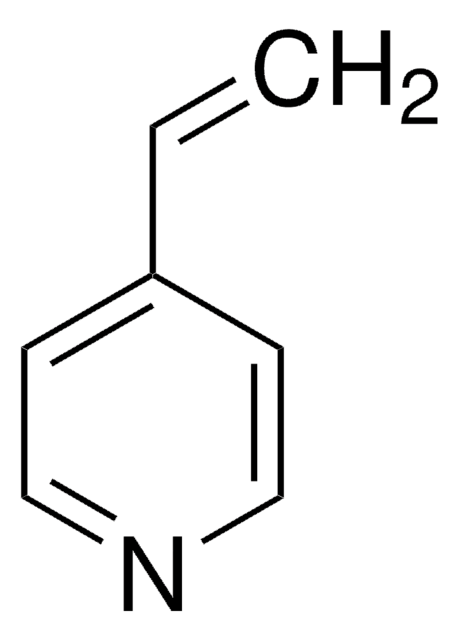472352
Poly(4-vinylpyridine)
average Mw ~160,000
Synonym(s):
4-Vinylpyridine polymer, Poly(p -vinylpyridine)
About This Item
mol wt
average Mw ~160,000
Quality Level
transition temp
Tg 142 °C (onset, annealed)
solubility
DMF, acetic acid and lower alcohols: soluble
InChI
1S/C7H7N/c1-2-7-3-5-8-6-4-7/h2-6H,1H2
InChI key
KFDVPJUYSDEJTH-UHFFFAOYSA-N
Looking for similar products? Visit Product Comparison Guide
Related Categories
Application
- To prepare metal-containing polymer, applicable as nonlinear optically active material.
- For the removal of perchlorate from an aqueous solution.
Storage Class Code
11 - Combustible Solids
WGK
WGK 3
Flash Point(F)
Not applicable
Flash Point(C)
Not applicable
Personal Protective Equipment
Certificates of Analysis (COA)
Search for Certificates of Analysis (COA) by entering the products Lot/Batch Number. Lot and Batch Numbers can be found on a product’s label following the words ‘Lot’ or ‘Batch’.
Already Own This Product?
Find documentation for the products that you have recently purchased in the Document Library.
Customers Also Viewed
Our team of scientists has experience in all areas of research including Life Science, Material Science, Chemical Synthesis, Chromatography, Analytical and many others.
Contact Technical Service